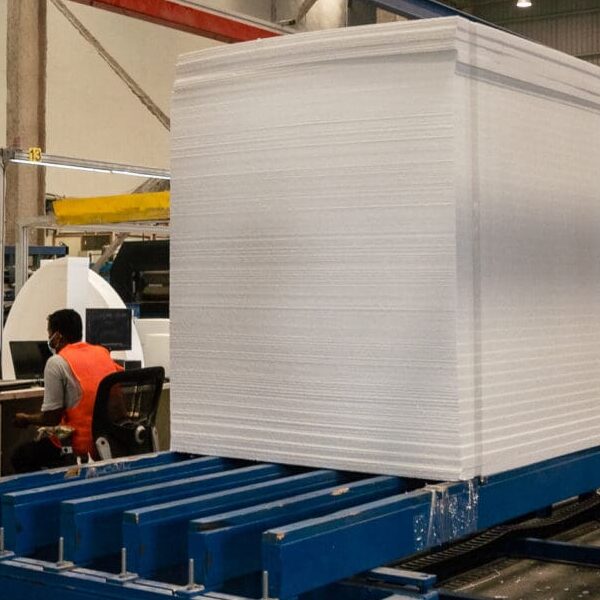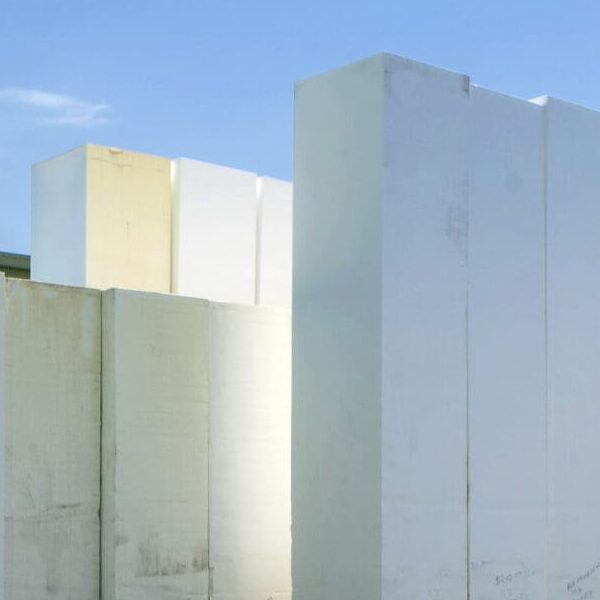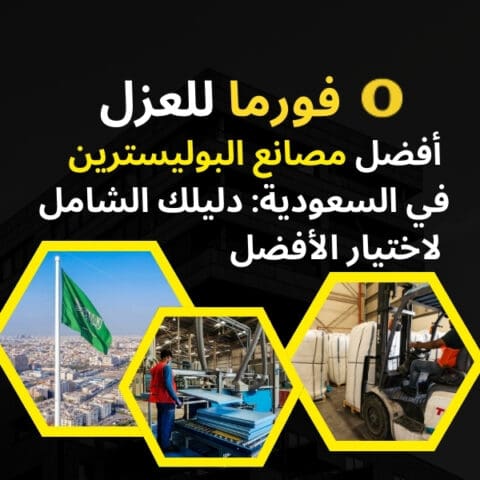Introduction
In the heart of the GCC region—where soaring temperatures and extreme conditions are part of everyday life—EIFS System details offer an innovative solution that’s quietly transforming the way buildings are insulated. The Exterior Insulation and Finishing System, or EIFS, has emerged as a game-changing construction material. From luxurious villas to towering skyscrapers, EIFS is making buildings smarter, more efficient, and more beautiful. Ready to find out how?
Table of Contents
What is EIFS? And Why Is It So Important?
Imagine a system that wraps your building in a protective, energy-efficient shield while also giving it a modern, stylish appearance. That’s what EIFS does.
At its core, EIFS is a multi-layered exterior wall system designed to insulate, protect, and beautify buildings. The key to its magic lies in its layered structure:
- Insulation Board: Usually made from Expanded Polystyrene (EPS) or Extruded Polystyrene (XPS), this layer is your building’s thermal barrier.
- Adhesive: Binds the insulation securely to the building’s exterior.
- Base Coat: The backbone of the system, reinforced with fiberglass mesh, adds strength and durability.
- Fiberglass Mesh: Embedded within the base coat, it’s what makes EIFS resistant to cracking and wear.
- Finish Coat: The glamorous outer layer that gives your building a polished, customizable appearance. Whether you’re aiming for a sleek, modern texture or a traditional stone look, EIFS delivers.
But EIFS isn’t just about looks. In the intense heat of the GCC, where temperatures can push buildings to their limits, the system’s insulation properties provide a lifeline. It’s designed to keep interiors cooler, reduce energy consumption, and help you save on those ever-increasing electricity bills.
Why Are GCC Builders Turning to EIFS ?
It’s no secret that construction in the GCC demands materials that can perform under pressure. With scorching summers, humidity, sandstorms, and rapid temperature changes, buildings need more than just conventional protection. That’s where EIFS stands out.
1. Energy Efficiency—Your Key to Cost Savings
With energy consumption rising, particularly from air conditioning, insulation is more important than ever. EIFS excels here, forming a thermal envelope around your building that minimizes the loss of cool air, keeping interiors comfortable. The result? Reduced energy bills that quickly add up over time.
2. Built to Withstand the Elements
GCC weather is no friend to ordinary building materials. Sandstorms, UV radiation, humidity, and fluctuating temperatures are all part of the challenge. Luckily, EIFS thrives in these conditions. It resists moisture, blocks heat, and weathers the harshest climates without breaking down, making it a perfect solution for this region.
3. Lightweight Yet Durable
Unlike traditional materials such as brick or concrete, EIFS is lightweight, which means less stress on your building’s structure. This makes it a top choice for both new projects and renovations. Plus, it’s versatile enough to be applied to nearly any surface—so no matter what you’re working with, EIFS is up to the task.
4. Design Freedom
Want a bold, modern facade? Or maybe something more classic? With EIFS, you’re not stuck with just one look. The finish coat can be customized in color, texture, and style, so whether you’re aiming for sleek, minimalist aesthetics or a rich, textured appearance, EIFS can deliver the look you want.
5. Cost-Effective Solution
Given its unparalleled insulation and durability, EIFS offers long-term savings. Lower energy bills, reduced maintenance, and the system’s ability to withstand wear and tear make it a smart, cost-efficient choice for the GCC market.
EIFS vs. Traditional Insulation
Traditional insulation materials—rigid foam, fiberglass, and spray foam—have served the region for years. But are they up to par with EIFS? Not quite.
- Thermal Bridging: Conventional insulation methods can leave gaps, allowing heat to seep into your building. EIFS, however, creates a continuous thermal layer, effectively sealing your building against the elements.
- Moisture Management: Humidity and moisture can spell trouble for standard insulation. EIFS comes with built-in moisture control, allowing water vapor to escape without letting water in, keeping your building dry and safe.
- Aesthetic Limitations: Traditional insulation often requires additional cladding to achieve an attractive finish. EIFS, with its integrated finish coat, gives you the best of both worlds—high-performance insulation and a sleek exterior finish.
Where Can You Use EIFS ?
EIFS isn’t just for luxury homes or high-end office towers—it’s a solution for any building where energy efficiency and durability matter. Here’s how EIFS is being used across the region:
1. Residential Properties
Homeowners across the GCC are turning to EIFS to slash their energy costs. The system’s efficiency makes it easier (and cheaper) to keep homes cool, and its customizable finishes add value and curb appeal.
2. Commercial Buildings
For malls, hotels, and office spaces, EIFS provides insulation that saves on energy costs while adding a professional, polished appearance. Plus, its durability ensures a longer lifespan with minimal maintenance.
3. Government and Public Buildings
In line with the GCC’s sustainability goals, EIFS is being used in schools, hospitals, and public facilities. It meets local building regulations for energy efficiency and offers long-term cost savings.
4. Industrial Facilities
For factories and warehouses, controlling indoor temperatures is essential to operations. EIFS helps keep industrial spaces cool while reducing the need for constant air conditioning.
The EIFS Installation Process: A Seamless Approach
One of the best things about EIFS? It’s as simple as it is effective. Here’s a glimpse into the installation process:
- Preparing the Surface: The building’s exterior is cleaned and prepped to ensure a smooth application.
- Applying the Adhesive: Adhesive is spread across the insulation board or substrate to secure the layers.
- Attaching the Insulation Board: The insulation board is applied, forming the system’s core.
- Base Coat and Mesh Application: The base coat is applied, and fiberglass mesh is embedded to reinforce the system.
- Finish Coat: Finally, the customized finish coat is applied, bringing your desired design to life.
Meeting GCC Building Regulations
With sustainability and energy efficiency top priorities, GCC countries are moving toward greener construction standards. Whether it’s the Saudi Energy Efficiency Program (SEEP) or LEED certification requirements, EIFS helps buildings meet these ambitious goals by drastically reducing energy consumption and enhancing performance.
Sustainability and the Future of EIFS
As environmental regulations tighten and developers seek eco-friendly solutions, EIFS stands out as a sustainable building choice. It not only improves energy efficiency, reducing your carbon footprint, but also contributes to longer-lasting, more durable buildings. The materials used in EIFS, such as polystyrene, are also recyclable, aligning with the region’s vision for sustainable development.
Why Choose Forma Insulation for Your EIFS Solutions?
Forma Insulation is at the forefront of providing high-performance EIFS systems tailored specifically to the demands of the GCC market. Our solutions are designed for durability, energy efficiency, and aesthetic flexibility, making them ideal for the region’s climate and construction needs.
We don’t just deliver EIFS systems; we partner with you to ensure each project meets the highest standards of quality, efficiency, and beauty. Whether you’re building a new commercial complex, renovating a residence, or embarking on a government project, our team will guide you through every step, ensuring a seamless and successful installation.
Take the Next Step: Transform Your Project with EIFS
Ready to make your building more efficient, durable, and visually stunning? EIFS is the solution you’ve been searching for. Join countless others in the GCC who are experiencing the benefits of this innovative system.
Learn more about EIFS systems and request a quote from Forma Insulation today: Forma Insulation EIFS Solutions
FAQ
Is EIFS suitable for the extreme climate of the GCC?
Yes, EIFS is particularly well-suited for the GCC’s harsh climate. It provides excellent thermal insulation, which helps buildings stay cool during intense heat. Additionally, its moisture-resistant properties make it effective in managing humidity, ensuring longevity and durability even in extreme conditions.
Can EIFS be used on existing buildings, or is it only for new constructions?
EIFS can be applied to both new constructions and existing buildings. Its lightweight nature and versatility make it ideal for renovations, offering an energy-efficient upgrade without requiring significant structural changes.
How long does EIFS last in the GCC environment?
EIFS is designed to be highly durable, with a typical lifespan of 50 years or more when properly maintained. Its resistance to cracking, weather damage, and UV radiation makes it an ideal long-term solution for the GCC’s demanding environment.
Is EIFS an environmentally friendly option?
Yes, EIFS contributes to energy savings by improving a building’s thermal efficiency, which reduces the need for heating and cooling. Additionally, many EIFS materials, including the polystyrene used in the insulation layer, are recyclable, making it a sustainable choice.
Is EIFS compliant with GCC building regulations?
Yes, EIFS meets or exceeds the building regulations and energy efficiency standards in the GCC. It’s a popular choice for projects aiming to comply with sustainability initiatives such as the Saudi Energy Efficiency Program (SEEP) and LEED certification requirements.
Still have questions? Contact Forma Insulation for more information or to request a customized quote!


